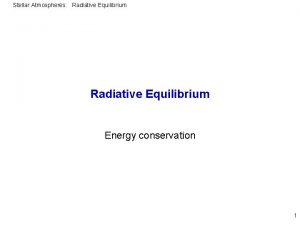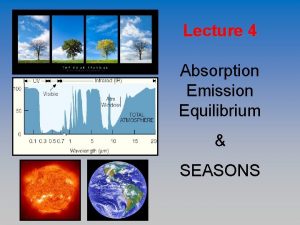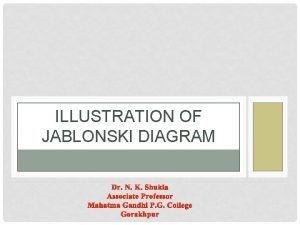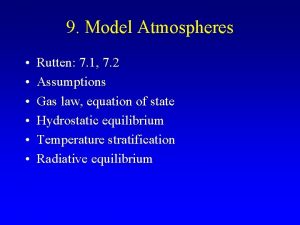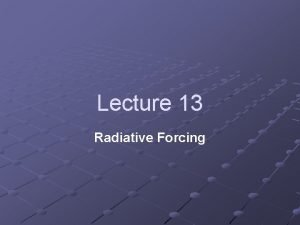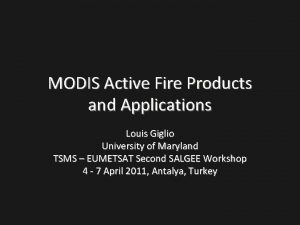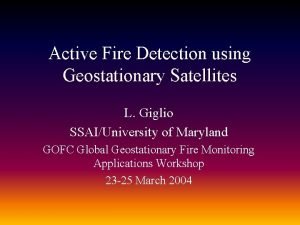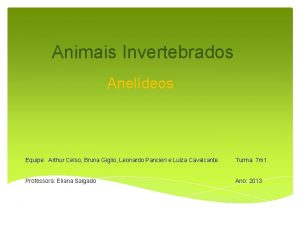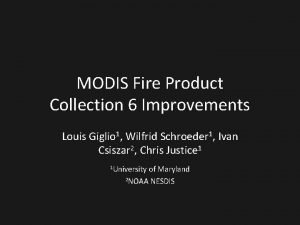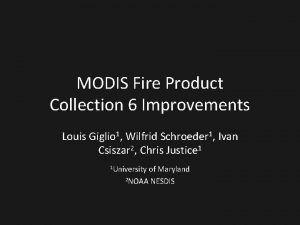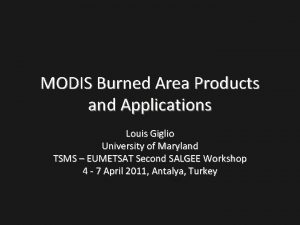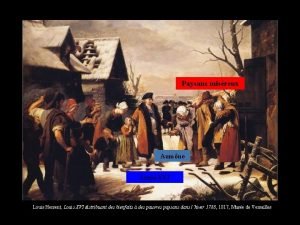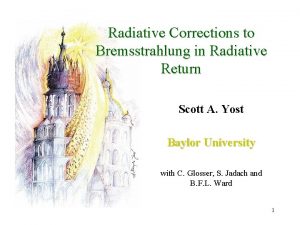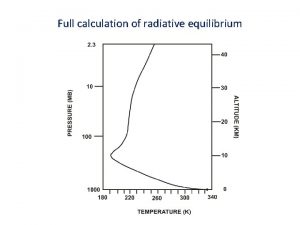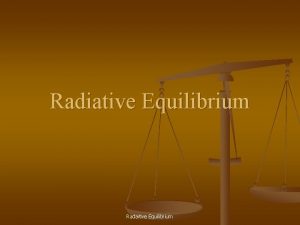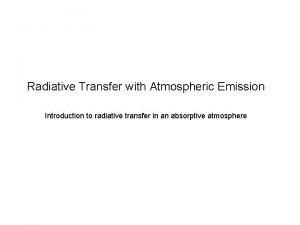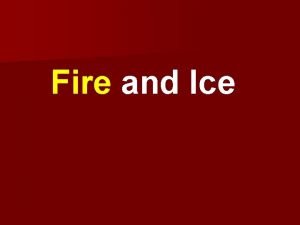Fire Radiative Power Applications and Issues Louis Giglio



















- Slides: 19

Fire Radiative Power: Applications and Issues Louis Giglio University of Maryland TSMS – EUMETSAT Second SALGEE Workshop 4 - 7 April 2011, Antalya, Turkey

Fire Radiative Power (FRP) • Instantaneous rate of emission of electromagnetic energy released by combustion – Not all fire energy is released through this way • Can be retrieved via remote sensing using a single ~4 μm channel – Exploits serendipitous characteristics of the Planck function – Kaufman et al. (1998), Wooster et al. (2003)

Kaufman et al. : Wooster et al. :

FRP Rationale • Measure of fire intensity – This in itself has some value • Proportional to rate of combustion (MT-1) of fuel • Integrating FRP over time yields fire radiative energy (FRE) • FRE is proportional to the total mass of fuel consumed during combustion

FRP Rationale • FRE is proportional to the total mass of fuel consumed during combustion • This offers an appealing alternative to inventory-based methods for estimating fire emissions – Inventory-based methods require spatially-explicit maps of fuel load and combustion completeness

Small grassland test fires observed with ground-based mid-infrared camera. Roberts et al. (2005)

Freeborn et al. (2010) Small grassland test fires observed with ground-based mid-infrared camera.

Applications

Organic Carbon (OC) + Black Carbon (BC) Fire Emissions Vermote et al. (2009)

Fire Intensity Classification Ichoku et al. (2008)


Terra MODIS Mean Fire Radiative Power Giglio et al. (2006)

FRP Issues • Retrieval assumptions – Fire emissivity, atmospheric transmittance – Planck function approximation (Wooster) – Realism of conditions used to derive empirical relationship (Kaufman)

FRP Issues • Retrieval assumptions – Fire emissivity, atmospheric transmittance – Planck function approximation (Wooster) • Temporal sampling rate – Too low for polar orbiters

Diurnal Fire Cycle VIRS fire observations used in conjunction with MODIS fire observations. Local Hour

Meteosat SEVIRI Diurnal FRP Southern Africa 14 July 2004 Roberts et al. (2010)

FRP Issues • Retrieval assumptions – Fire emissivity, atmospheric transmittance – Planck function approximation (Wooster) • Temporal sampling rate – Too low for polar orbiters • Bias due to sensor characteristics – Non-uniform response across pixel – Fire(s) too small to detect

Sensor Response MODIS Schroeder et al. (2010) GOES

FRP Status • Promising for emissions estimates but still somewhat preliminary • Achieving wider use because of SEVIRI – Excellent temporal sampling • Further validation needed • Current FRP/FRE-based fire emissions estimates tend to be much lower than those from inventory-based methods
 Radiative equilibrium temperature
Radiative equilibrium temperature Radiative equilibrium temperature
Radiative equilibrium temperature Jablonski diagram sequence
Jablonski diagram sequence Radiative equilibrium temperature
Radiative equilibrium temperature Radiative forcing definition
Radiative forcing definition Vl louis vuitton
Vl louis vuitton Modis
Modis Giglio
Giglio Alessandra giglio
Alessandra giglio Giglio
Giglio Jornais digitalizados
Jornais digitalizados Bruna giglio
Bruna giglio Daniel giglio
Daniel giglio Cindy giglio beaumont tx
Cindy giglio beaumont tx Figlio amoroso giglio
Figlio amoroso giglio Le parti del fiore
Le parti del fiore Draw the power triangle
Draw the power triangle How did louis xiv gain, consolidate, and maintain power?
How did louis xiv gain, consolidate, and maintain power? Reichstag fire who was the fire starter
Reichstag fire who was the fire starter Alarm
Alarm
